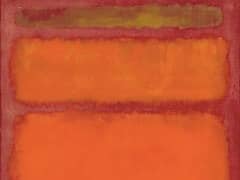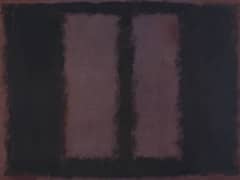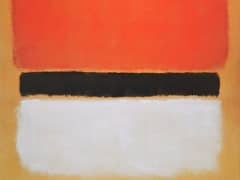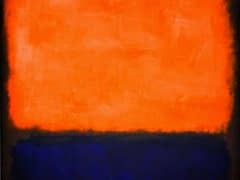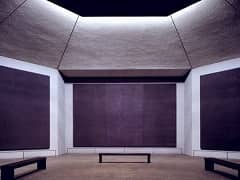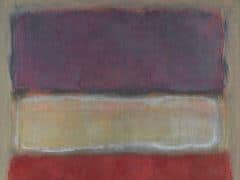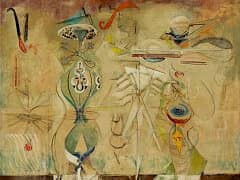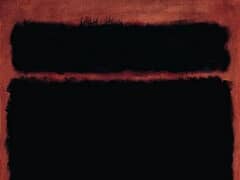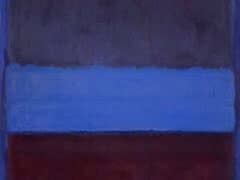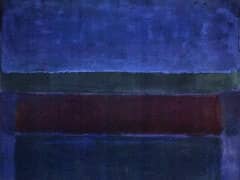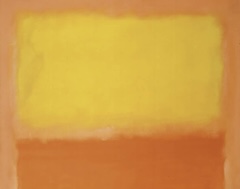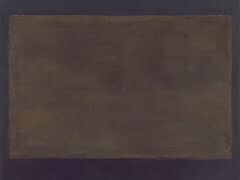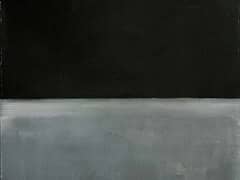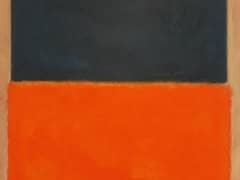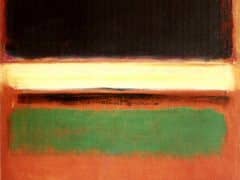Seagram Mural Sketch, (1959) by Mark Rothko
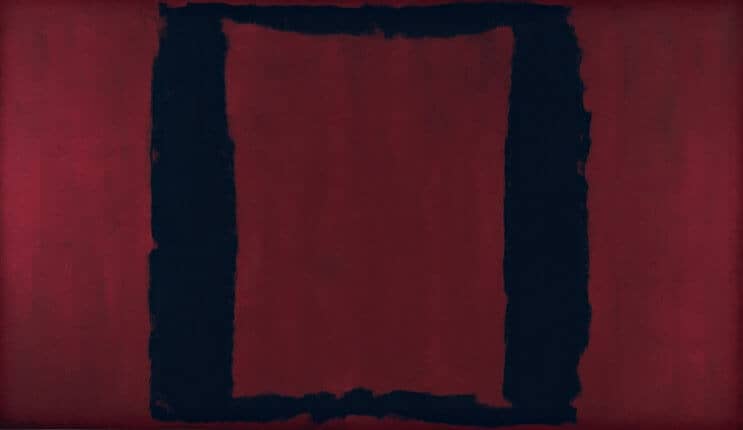
Rothko was commissioned in mid-1958 to furnish the newly finished Seagram Building on Park Avenue in New York with wall paintings. The edifice, designed by Mies van der Rohe and Philip Johnson, is today still the headquarters of the tradition-rich beverage company Joseph E. Seagram & Sons. Rothko received the contract on June 25, requiring him to "decorate" an area totaling roughly 50 square meters. A fee of 35 thousand dollars was negotiated, including a down payment of seven thousand, with the rest to be paid in installments over the next four years. The room Rothko was to decorate was that of the Four Seasons restaurant, foreseen as a noble eatery for elite management. This was to be the first time that Rothko would design a related series of paintings, as well as the first time he would create works for a specific room. The Four Seasons dining hall was long and narrow. In order for his pictures to be seen, they would need to be hung over the heads of the diners, and not, as Rothko had previously favored, be placed just above the floor.
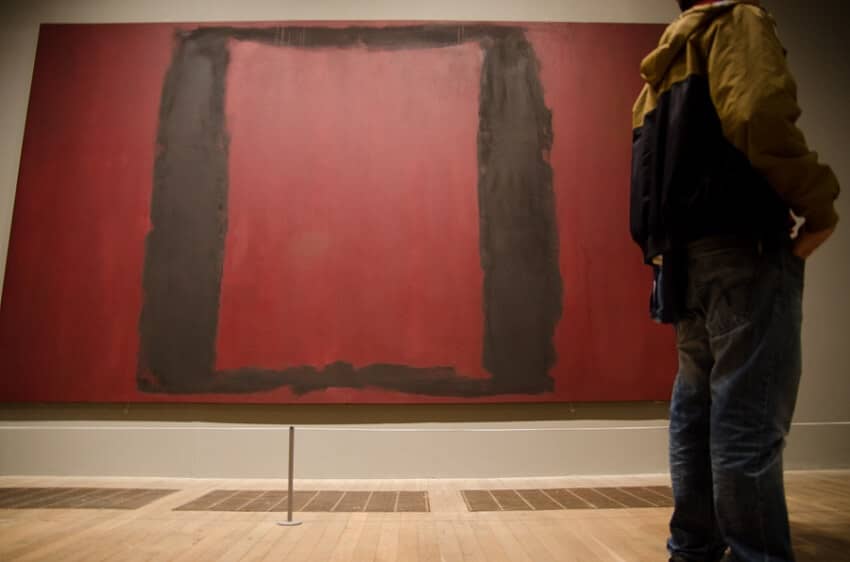
During the months in which he worked on the Seagram murals, he completed three series of gigantic wall paintings, approximately 40 works in all, and for the first time in 20 years made painted sketches as studies. He used a warm palette of dark red and brown tones, breaking the horizontal structure of his pictures by turning them at 90-degree angles. In this way he created a work that would relate directly to the architecture of the room. The surfaces of color recalled architectural elements, as columns, walls, doors and windows, giving the viewer a feeling of confinement, yet presenting him with an unreachable world beyond.

